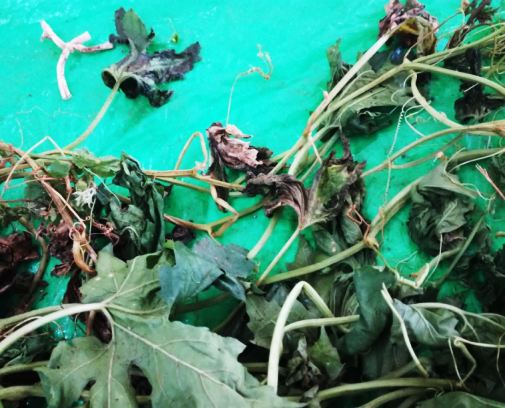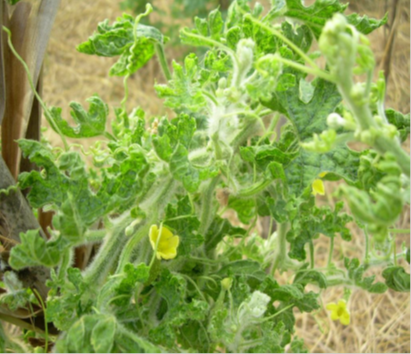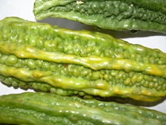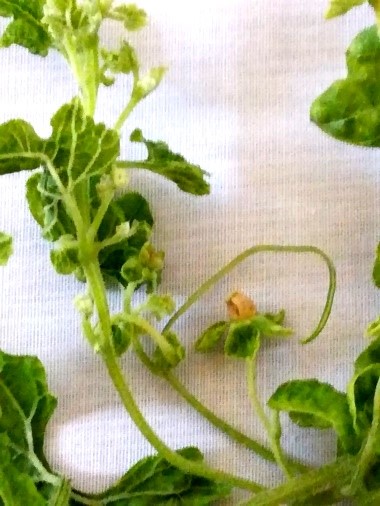
- Address : P.O. Box 11, Gannoruwa rd, Peradeniya, Sri Lanka
- E- Mail : director.hordi@doa.gov.lk
- Telephone :(+94) 081-2388011-12-13
- Fax :(+94) 081-2388234

Pumpkin
Cucurbita maxima
Released Varieties
Climatic requirements/ Areas suitable for cultivation
These crops may be grown to an elevation of 500 m in the dry and intermediate zones. Pumpkin is grown as a Yala Crops, While squash can be grown in either Maha or Yala.
Soil
Soil should be rich in humus with a pH range of 5.5 – 7.5
Seed requirement
1 kg/ha
Land preparation
a) Plough to a depth of about 20-30 cm and harrow for fine tilth.
b)Make planting holes 30 x 30 x 30 cm
c) Add 5 kg organic matter per planting hole, mix with soil and heap to about 10 cm above ground level.
Planting
Plant after heavy rains.
a) Local Strains and A.N.K.
i) Dibble 4 seeds/planting hole (10 cm between seeds)
b)Butternut
i) Seeds with high germination – 2 seeds/hill
ii) Seeds with low germination – 3 seeds/hill
iii)Thin to 2 plants/hill 2 weeks after emergence
iv)To avoid adverse effects of unfavourable weather conditions seedlings can also be raised in polythene bags or Noridoko nurseries
Spacing
a) Local Strain – 3 x 3m
b) A.N.K. – 2.5 x 2.5 m
c) Butternut – 50 x 100 cm
Fertilizer
N -140 kg/ha, P2O5-175 kg/ha, K2O – 105 kg/ha
Urea kg/ha | TSP kg/ha | MOP kg/ha | |
| Basal | 220 | 380 | 125 |
| Top dressing – apply 4 and 8 weeks after planting | 45 | – | 25 |
Urea kg/ha | TSP kg/ha | MOP kg/ha | |
| Basal | 75 | 200 | 60 |
| Top dressing – apply 4 and 8 weeks after planting | 75 | – | 60 |
Water supply
a) For irrigation or drainage purposes make shallow drains 25 cm away from the planting hill.
b) Irrigate daily until germination is complete and every 7 days thereafter
C)Irrigate until beds come to field capacity, taking care not to submerge vines.
Weed Control
Hand weed and apply a straw mulch 3 weeks after gerination
Harvesting
Harvest when fruit develops a powdery film.
1 pumpkin
a)A.N.K. – Harvest 40 days after flowering
b) Local Variety – Harvest 60days after flowering
2 Butternut – harvest 20 days after flowering
Yield
Average yeilds for all varieties vary from 15,000 – 20,000 kg/ha
Post-harvest
a) Pumpkins can be stored for 6 – 8 months
b) Butternut can be kept for about 1 month under ambient conditions
Pest Management
Disease Management
- Fungal diseases
- First appears as pale yellow spots on older leaves
- These spots enlarge as the white, fluffy mycelium grows over leaves surfaces
- Severely attacked leaves become brown and shrivelled and defoliation may occur
 |
- Use recommended fungicides at initial stage of disease development (Refer: Pesticide recommendation DOA, 2019)
- Distraction of infected plant debris after harvest
Causal organism: Pseudoperonospora cubensis
Symptoms:
- Angular yellow spots that are limited by the leaf veins on the upper surface of the leaves.
- Leaves become chlorotic and finally necrotic and host plant cells die
Management:
- Use recommended fungicides at initial stage of disease development (Refer: Pesticide recommendation DOA, 2019)
- Distraction of infected plant debris after harvest
Causal organisms: Sclerotium spp., Fusarium spp.
Symptoms:
- Initially the plants show temporary wilting symptoms
- The leaves yellowing, loose turgidity and show drooping
- Eventually, the plant dies.
- Vascular bundles in the collar region become yellow or brown.
Management:
- Destroy infected plants with soil
- Improved drainage
- Use recommended fungicides at initial stage of disease development (Refer: Pesticide recommendation DOA, 2019)
Causal organisms: Didymella bryoniae
Symptoms:
- Lesions on leaves and fruit usually begin as spreading water-soaked areas
- The former these may have a chlorotic halo, become light brown and irregular in outline
- Dark cracked sunken lesions on fruit
- Plant collapse where sunken, girdling cankers
- Spots on stems often elongate into streaks and gummy exudates may occur from cracks
- Dark brown to black fruiting bodies (pycnidia) can be seen on fruit, stem, or leaf
Management:
- Crop debris should be ploughed deeply immediately after harvest to reduce fungus survival
- Use recommended fungicides at initial stage of disease development (Refer: Pesticide recommendation DOA, 2019)
- Bacterial diseases
- Sudden drooping of leaves
- Whole plant finally wilts
- Leaves become brown, dry
- Vascular discoloration (Brown)
- Permanent wilting
- Infected soil, water, plant debris, Nematodes and insects ,pruning, Weeds as host plants
 |
 |
- Destroy infected plants with soil
- Crop rotation with non- susceptible crops (okra , maize)
- Mixed cropping with cruciferae crops
- Avoid movement of equipment from infected fields to non- infected fields
- Viral diseases
- upward curling, shortening, and distortion of leaves
- Plant stunted and fruits deformed.
 |
- Mosaic and mottling of leaves
- leaf distortion
- Malformation of fruits and reduction in fruit size
- In severe infections, oily patches on the fruit surface
 |
Transmission: Seed borne, through sap
Symptoms:
- Green mottle, leaf deformation
- Green spot on fruits, turn bright yellow and decaying fruit
- fruit malformation.
Symptoms:
- Stunting, yellowing, necrosis (occasionally), mosaic, leaf deformations (blisters, shoe stringing)
- Fruit discolorations and deformations
- Pytoplasma Disease
 |
 |
